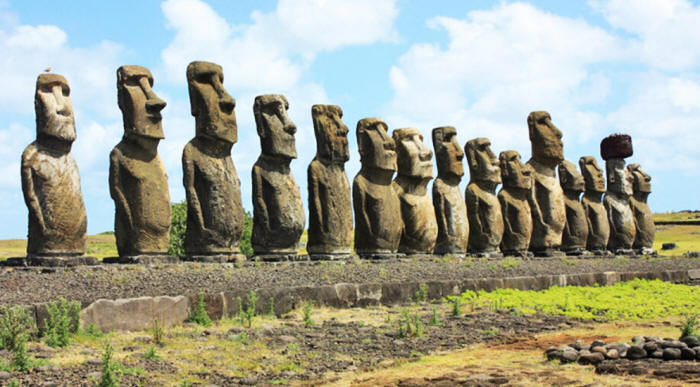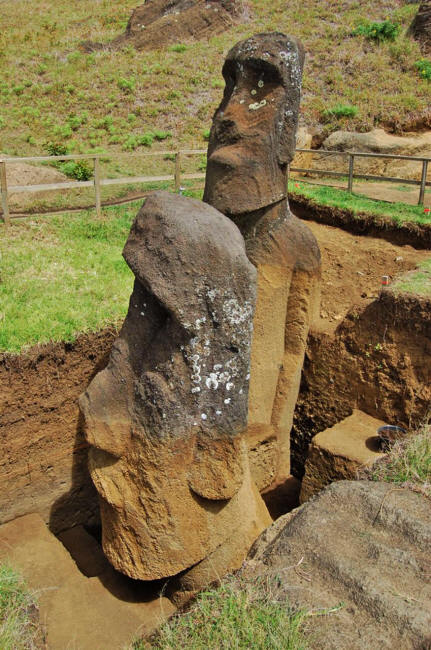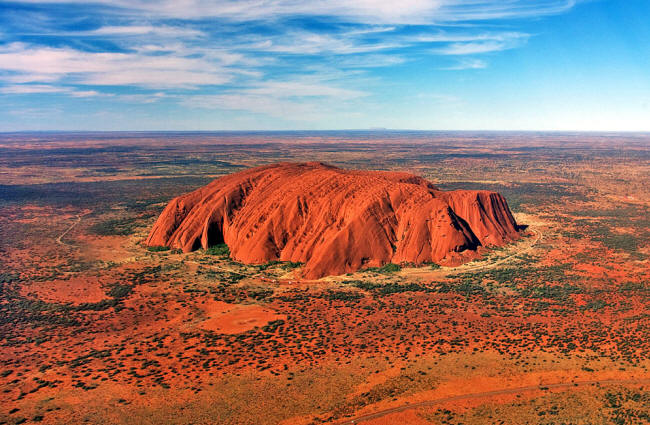|

by
Manuel García Aguilar
December
17, 2019
from
TheMindUnleashed Website
Italian
version

Photo credit:
Arian Zwegers, Flickr
The meaning
behind the statues on Easter Island
has puzzled
scientists for centuries...
New excavations
in Easter Island's statue quarry are providing bits
of information that is drastically changing our perception of
the Moai and the secrets about why these monoliths were produced using a
very specific type of soil.
It turns out that the belief that these towering idols had only a
ritualistic and maybe spiritual purpose for the Rapa Nui people was
quite wrong. With the fresh insight provided with this study, we are
now able to understand a more practical usage for these works of
art.
The study (New
Excavations in Easter Island's Statue Quarry - Soil Fertility, site
Formation and Chronology), centers on excavations in the inner region of
Rano Raraku,
the megalithic statue (Moai) quarry of Rapa Nui (Easter Island).
In Rano Raraku, a transformed landscape is reconstructed based upon
soil chemistry, micromorphology, and macro and micro-botanical data
framed within a stratigraphic and radiocarbon informed Bayesian
model that is the first for
Rapa Nui.

Excavation and analysis
at the site of two Moai in Rano Raraku
as
part of the study.
(Easter Island Statue Project)
We can really see that multidisciplinary work was done in the area.
With the use of micromorphology, for instance, we can recreate the
shapes, soil, and rock conditions we had in the smallest structures
of that time and, employing stratigraphic and radiocarbon
information, we are placed in the (almost) exact time these
structures had their genesis.
The Moai statues are monoliths and Rano Raraku is the volcanic
crater formed of consolidated volcanic ash.
Monoliths are geological features consisting of a single rock. And
Rano Raraku… well, let's use soil chemistry to explain this.
This
work from Jo Anne Van Tilburg, director of the Easter Island Statue
Project (EISP), was
recently published in Journal of Archaeological
Science.

Uluru, Northern Territory, Australia,
is often referred to as the
biggest monolith.
"When we got the chemistry results back, I did a double-take,"
explains geoarchaeologist Sarah Sherwood from the University of the
South in Sewanee, Tennessee.
"There were really high levels of things that I never would have
thought would be there, such as calcium and phosphorous. The soil
chemistry showed high levels of elements that are key to plant
growth and essential for high yields."
All of this information
belongs to the volcanic crater Rano Raraku.
"Everywhere else on the island the soil was being quickly worn out,
eroding, being leeched of elements that feed plants," Sherwood
said.
"But in the quarry, with its constant new influx of small fragments
of the bedrock generated by the quarrying process, there is a
perfect feedback system of water, natural fertilizer, and
nutrients."
If you add salt to your food it will make it salty, if you add a
metal atom to a chemical bond it will make it more electrically
conductive. If you add a monolith with optimal conditions to a
portion of soil that needs increased productivity, you may enrich
that area.
Almost 400 of the monoliths remain in the quarry, and some are
buried in the soil with support from fortified rock structures.
"This study radically alters the idea that all standing statues in
Rano Raraku were simply awaiting transport out of the quarry," Van
Tilburg
said.
"That is, these and probably other upright Moai in Rano Raraku were
retained in place to ensure the sacred nature of the quarry itself.
The Moai were central to the idea of fertility, and in Rapanui's
belief, their presence here stimulated agricultural food
production."
Van Tilburg and her team are working on another study that analyzes
the rock art carvings that exist on only three of the Moai.
|




